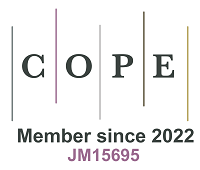Inauguration of a unique journal Ageing and Neurodegenerative Diseases: a new beginning seeking cures for age-related neurodegenerative diseases
Introduction
As the Editor-in-Chief of the newly founded journal Ageing and Neurodegenerative Diseases (AND), I am honored to introduce this journal to you on behalf of the OAE Publishing Inc.
AND is a peer-reviewed and open access multidisciplinary journal publishing high-quality original articles, reviews, case reports, commentaries, letters to the editor, etc. The aims of this journal are to report innovative research advances in the cellular and molecular mechanisms underlying the ageing process and age-related neurodegenerative diseases, such as Alzheimer’s disease, Parkinson’s disease, amyotrophic lateral sclerosis, etc. We are also interested in publishing innovative research describing therapeutic interventions in this field. Through this journal, we aim to promote collaboration and interaction among basic scientists, clinicians, and industrial experts. Our ultimate goal is to find solutions for slowing the ageing process, which will hopefully ameliorate and/or delay the onset of neurodegenerative diseases.
Ageing population is a big challenge to our society
According to the World Health Organization, nearly two billion people across the world are expected to be over 60 years old by 2050, which is twice the ageing population in 2000. With the increasing life expectancy, the global ageing population has expanded rapidly in recent decades. In order to adapt to the increasing ageing population, many countries have raised the retirement age, reduced pension benefits, and have started spending more on elderly care. Health is the biggest issue that comes with ageing. Because of the increase in the ageing population, the prevalence of age-related chronic diseases has increased dramatically. These chronic diseases, including cardiovascular disease, diabetes, cancers, and neurodegenerative diseases, have become an urgent challenge, as there are currently no effective therapies for many of them. The governments in many countries have spent a significant resource to conduct research seeking solutions to delay the ageing process and reduce the incidence of most common age-related diseases.
Uncovering the mechanisms underlying the ageing process is an urgent task
Ageing is a natural process defined as the progressive deterioration of biological functions after the organism has attained its maximal reproductive competence. During the ageing process, our body suffers from a serious of metabolism abnormality and cell damage, which leads to the phenotypes of ageing, along with age-related diseases. Among the age-related diseases, neurodegenerative diseases have received a lot of attention due to their irreversibility, lack of effective treatments, and their associated social and economic burdens. Brain ageing has been considered to predispose to neurodegenerative disorders. At a cellular level, brain ageing is characterized by increased inflammation, oxidative stress, increased genomic instability, telomere attrition, epigenetic alterations, metabolism impairment, protein homeostasis disturbance, mitochondrial dysfunction, cellular senescence, nutrient sensing deregulation, stem cell exhaustion and intercellular communication blockage [Figure 1]. However, despite intensive research, the exact molecular mechanisms underlying the ageing process, particularly the molecular pathways and networks accounting for the switch from physiological brain ageing to neurodegeneration, remain to be fully elucidated. A better understanding of the genetic and non-genetic factors regulating the ageing process will greatly benefit the discovery of anti-ageing remedies and novel therapies for neurodegenerative diseases.
Age-related neurodegenerative diseases are a leading concern in neuroscience and neurology research
The ageing society today is confronted with an epidemic of chronic diseases, among which neurodegenerative diseases present an ever-growing medical and social burden. Ageing is a major risk factor for neurodegeneration, and that the prevalence of age-related neurodegenerative diseases such as Alzheimer’s disease, Parkinson’s disease, amyotrophic lateral sclerosis, etc. has dramatically increased in recent decades. Unfortunately, no treatments have been shown to slow the neurodegeneration in patients with these diseases. Thus, to develop successful interventions, it is extremely important to investigate the basic mechanisms of ageing and their role in the onset and progression of neurodegenerative diseases, the results of which will facilitate the discovery of potential targets for novel therapies for neurodegenerative diseases. In addition, early clinical intervention is crucial for the management of patients with neurodegenerative diseases. However, the lack of specific biomarkers for their accurate diagnosis hinders early clinical diagnosis and intervention of these devastating diseases. Furthermore, the discovery and development of novel effective therapies for neurodegenerative diseases largely depends on reliable biomarkers of mechanism and target engagement to accelerate therapeutic development [Figure 1]. Thus, we plan to launch this new journal, which is aimed to stimulate and communicate the innovative research on age-related neurodegenerative diseases, and enhance the collaboration and interaction among basic scientists, clinicians and industrial experts. We welcome you to submit your papers to this unique and promising journal of AND.
Declarations
Authors’ contributionsPreparing the manuscript draft: Le WD
Availability of data and materialNot applicable.
Financial support and sponsorshipNone.
Conflicts of interestThe author declared that there are no conflicts of interest.
Ethical approval and consent to participateNot applicable.
Consent for publicationNot applicable.
Copyright© The Author(s) 2021.
Cite This Article
How to Cite
Download Citation
Export Citation File:
Type of Import
Tips on Downloading Citation
Citation Manager File Format
Type of Import
Direct Import: When the Direct Import option is selected (the default state), a dialogue box will give you the option to Save or Open the downloaded citation data. Choosing Open will either launch your citation manager or give you a choice of applications with which to use the metadata. The Save option saves the file locally for later use.
Indirect Import: When the Indirect Import option is selected, the metadata is displayed and may be copied and pasted as needed.
















Comments
Comments must be written in English. Spam, offensive content, impersonation, and private information will not be permitted. If any comment is reported and identified as inappropriate content by OAE staff, the comment will be removed without notice. If you have any queries or need any help, please contact us at [email protected].